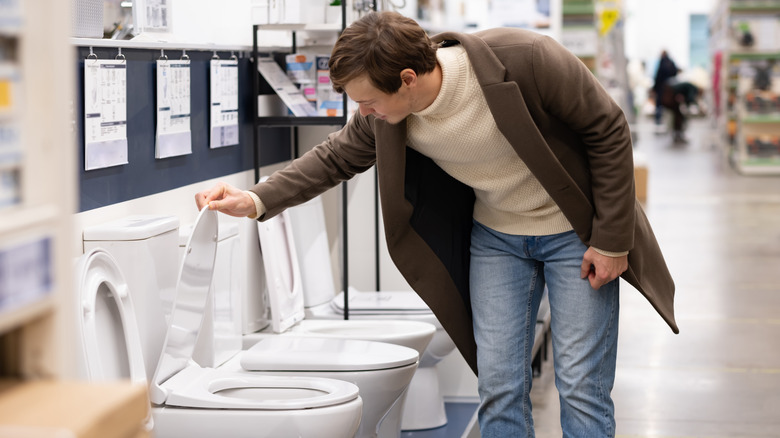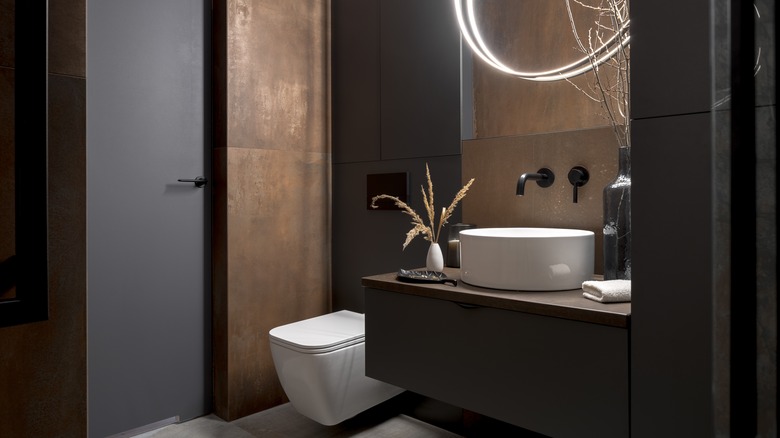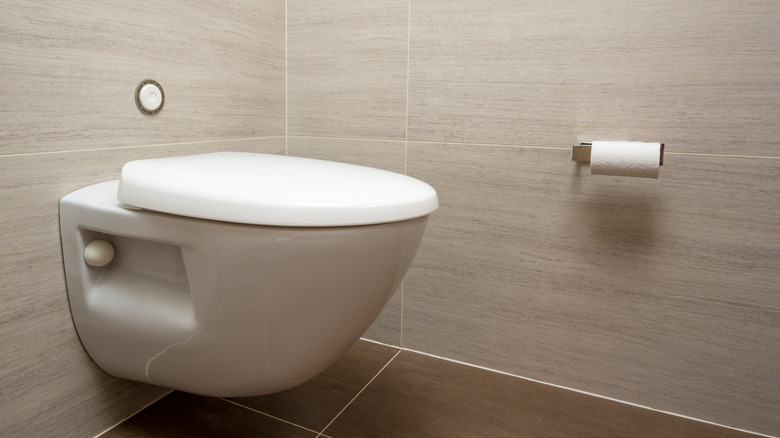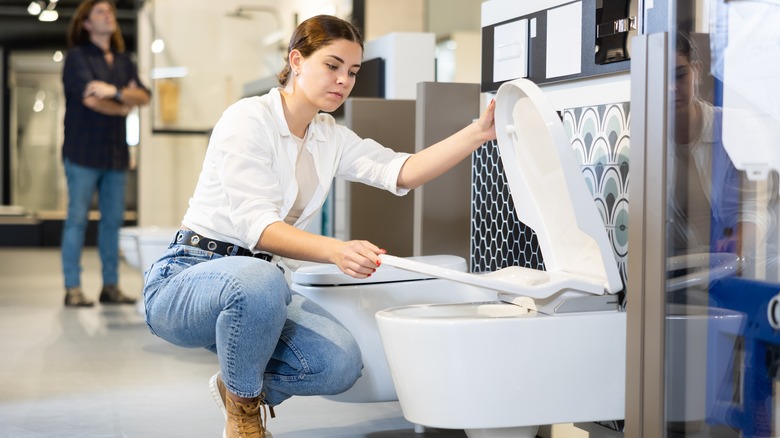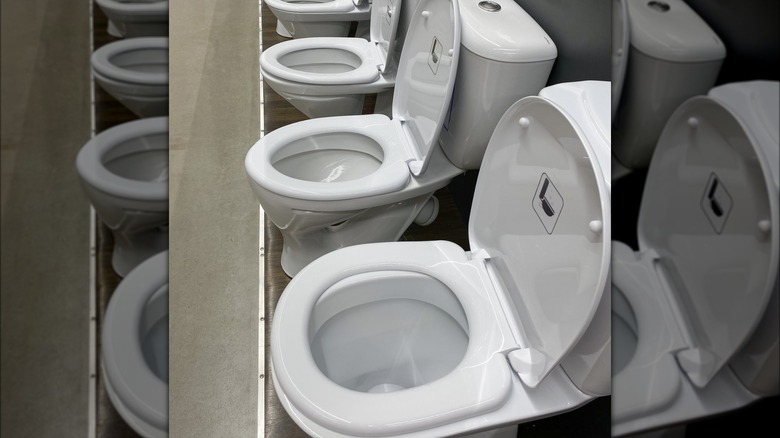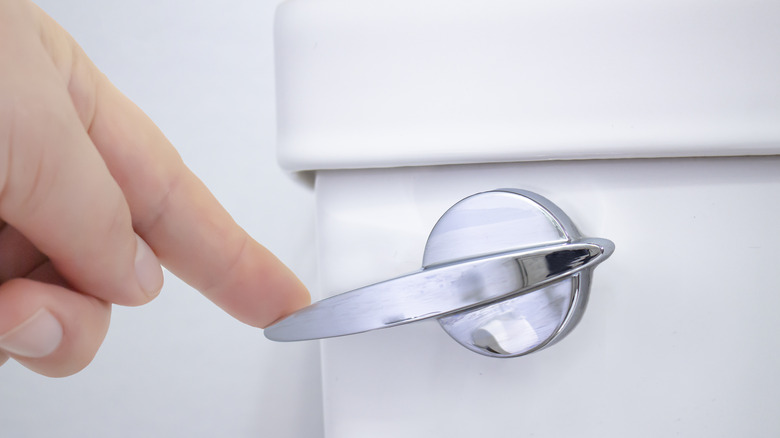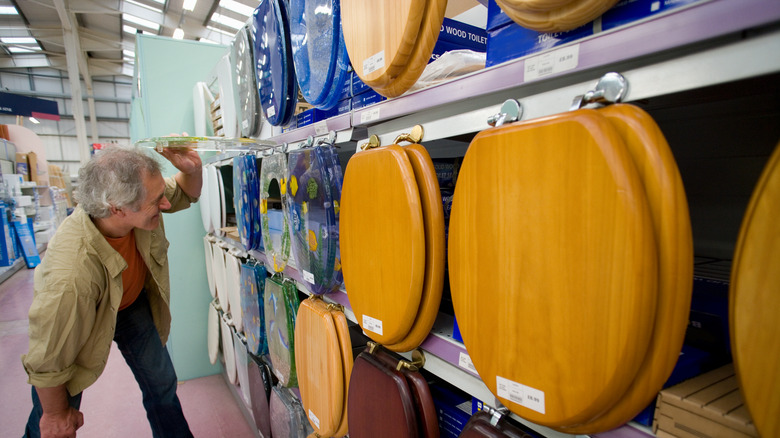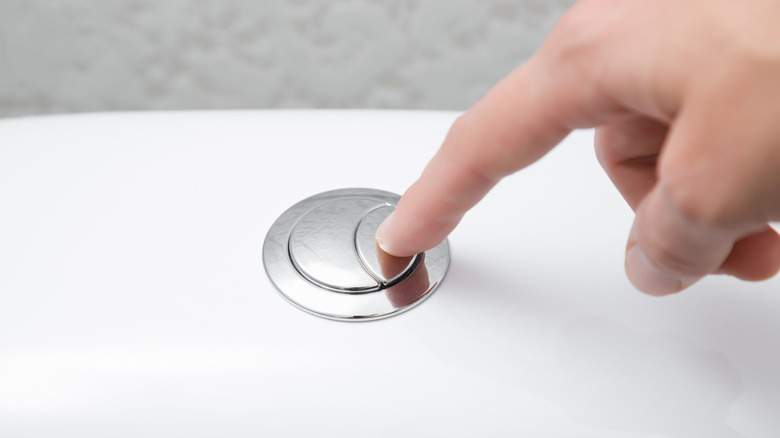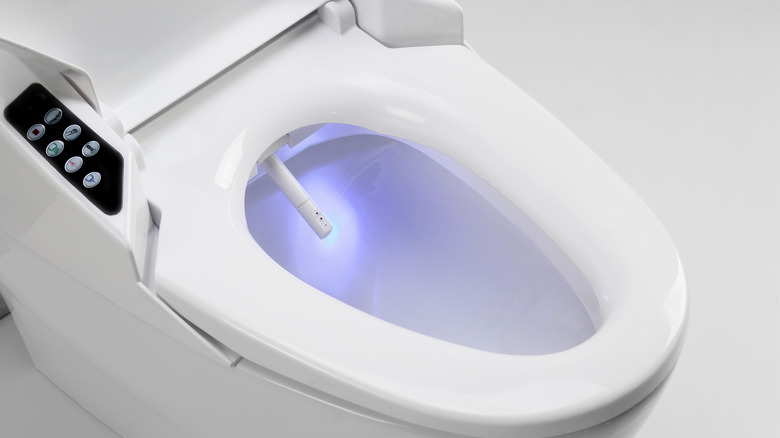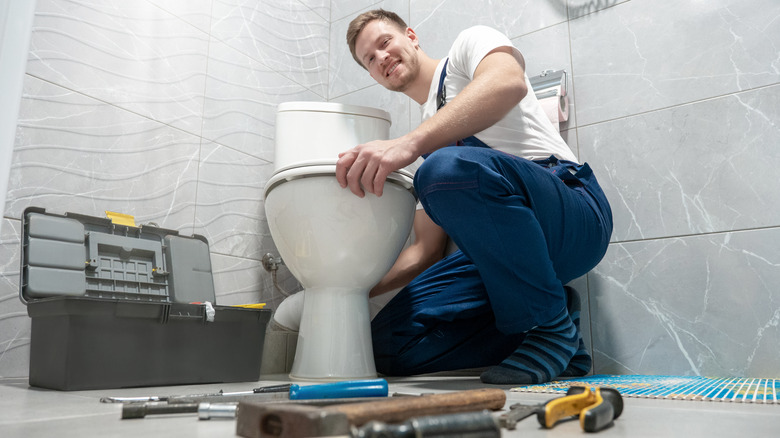What To Know Before Buying A New Toilet For Your Bathroom
Are you planning a bathroom upgrade project? Or, are you facing the frustration of discovering a leaky or otherwise broken toilet? Either way, you're probably thinking about purchasing a new toilet. Toilets are certainly a necessary component of every bathroom, after all. However, all models are not the same.
In fact, there are several different types of toilets, ranging in shape, height, and features. This is not a purchase that you want to make without first doing some research and thinking about exactly what it is you are looking for. If you don't take some time to learn about toilets, then you could end up with a product that you aren't satisfied with. It could cost too much money, be uncomfortable to use, be challenging to keep clean, waste water, and more. Don't leave yourself regretting your purchase; let us help guide you in making a choice you'll be happy with.
How much space do you have for the toilet?
One of the first things you'll want to think about when shopping for a new toilet is how much available space you have for it in your bathroom. All toilets are not the same size, and some may be better suited for your bathroom, depending on the space constraints. A standard toilet is between 28 inches and 30 inches deep, and about 20 inches wide. However, some models may be more compact, while others may have a larger footprint.
To determine how much space you have in your bathroom, use a tape measure to find the length and width of the space where you wish to put the toilet. Then, it is recommended to have a minimum of 15 inches of space on either side of the toilet to keep users from feeling too cramped. If you have any shelves or cabinets above where you wish to put the toilet, you will also want to measure the available height. Toilets are generally between 27 inches and 32 inches tall, but, depending on the measurement you find for your space, you can look for a shorter model if necessary. Adding to the topic of height, it's also worth keeping in mind the height of the people in your household who will be actually using the toilet.
What type of toilet do you want?
After determining how much space you have for your new toilet, you will want to decide on which toilet type you want. A two-piece toilet is the most common choice. As their name suggests, these models have two different components — a toilet bowl and a toilet tank — that are connected together. Two-piece toilets offer a basic design and are generally more affordable. If you're looking to upgrade your toilet, then you might wish to consider a one-piece toilet. Rather than having two separate components that are bolted together, these models have just one single piece with everything already connected. Because of their design, they can take up less space in a bathroom and are less likely to leak due to fewer connection points.
A high tank toilet is another option to consider. Like two-piece toilets, these have a separate tank and bowl. However, instead of these two components being close together, the tank is located much higher up on the wall, providing a unique look. Users flush the toilet using a pull chain. If you're going for a modern look in your bathroom, then you might decide that a wall-mounted toilet is right for you. Some are tankless, while the tank component remains hidden in the wall for other models. Just be prepared to spend more money on one of these sleeker options.
Your home's plumbing may dictate which type of toilet you get. While some homes have pipes that come in through the floor, others come in through the wall. Unless you want to pay a plumber to reroute your pipes, which will be expensive, you'll probably want to look for a toilet type that is compatible with your current setup.
What seat height do you prefer?
Many people may not realize that they'll also need to determine their preferred toilet height before making a purchase. When shopping for a toilet, note that the height is the distance from the floor to the seat — think of it as the height of a chair or a sofa. Some seats may be too high that your legs feel like they're hanging, while others may be too short that you feel too crouched sitting down. These same considerations apply when shopping for a toilet. Generally speaking, if you are a taller individual, a higher toilet will be more comfortable for you, and if you are on the shorter side, you might want a model that is not so tall.
There are two general categories for toilet heights: standard and comfort. The seat on a standard height toilet will be between 14.5 inches and 16 inches, while the seat on a comfort height (sometimes also called chair height) model will be between 17 inch and 19 inches. In addition to being a better fit for taller people, comfort height toilets may be a smarter choice for individuals in a wheelchair or with other mobility issues. They meet the standards put in place by the Americans with Disabilities Act for toilet height.
Which bowl shape would you like?
Bowl shape is another factor that you don't want to overlook when shopping for a new toilet. There are two toilet bowl shapes to know before you make a final decision about which is right for you. The first is a round bowl. As you may guess, these bowls and seats are nearly circular in shape. They are also more compact, measuring about 16.5 inches from the bolts to the edge of the bowl. This can make them a better fit for smaller bathrooms. Generally speaking, round toilet bowls are also a bit less expensive.
The other shape to consider is an elongated bowl. While these models tend to cost a bit more, many individuals feel that the additional expense is worth the added comfort. They measure about 18.5 inches from the bolts to the edge of the seat, meaning elongated options are about 2 inches longer than round bowls. This extra length can make them a bit more comfortable. However, if you have a smaller bathroom, that extra 2 inches could make the space feel more cramped and may not be worth it.
Which flush option would you prefer?
All toilets flush the same way, right? Wrong. Flush options are another thing you'll want to consider as you search for the perfect toilet for your bathroom. The flush type you'll most often see is a single-flush. When the level is pushed down, these models siphon waste down using gravity. They tend to be the most budget-friendly. Dual-flush models have two flush options, with one being for liquid waste and one for solid waste. The liquid waste option uses less water, while the solid waste option will deliver a more powerful flush to ensure the bowl is cleared. Though these models can reduce waste, you might find that the bowl needs to be cleaned more frequently.
Yet another option is a pressure-assisted toilet. With the siphon jet-like flush, these models deliver a powerful flush for more effective results. Additionally, because air pressure is used to improve the force, toilets that use this type of flush are also less likely to clog. Moreover, pressure-assisted models require less water for each flush than single-flush varieties.
Finally, you'll also find power-assisted toilets (sometimes called upflush or macerating). These varieties use a pump to send waste up to the sewer. They are best suited for basement bathrooms where the sewer line is above the level of the toilet. You can also find varieties of these to use on an RV or a boat.
What type of toilet seat do you want?
Many toilets are sold without a seat, which means that you'll need to purchase one separately. Plastic toilet seats are a budget-friendly and generally durable option. They're also available in a range of colors and styles to suit your specific wants. Another popular seat to consider is a wooden toilet seat (both solid and engineered wood options are available). These models are very durable, along with being sealed to stay protected against moisture. You can find both glossy and matte finishes, and different stains or colors, depending on the look you prefer.
Beyond these two more popular selections, you might also want to look at polyresin, medium density fiberboard (MDF), or duroplastic seats. Polyresin seats offer an organic, eco-friendly alternative. They tend to be lightweight and are available in a range of styles and colors to match different bathroom decor schemes. An MDF seat, which is made using compressed wood fibers, is another option to consider for those looking for an eco-friendly choice. The sealant added to these seats makes them very durable and long-lasting. Finally, if you're looking for something that is going to hold up well to frequent use and cleaning, a duroplastic seat might be right for you. These scratch-resistant seats are also good at minimizing the spread of germs and bacteria.
Are you interested in a high-efficiency toilet to conserve water?
If you've been working on making upgrades around your house to minimize your environmental footprint, then a high-efficiency toilet might be for you. Over the past few decades, flushing technology has improved to reduce the amount of water that is needed. While toilets made before 1980 required 5 or more gallons of water for each flush, improvements in technology in the '80s brought that number down to about 3.5 gallons per flush. Legislation was passed by Congress in 1992 requiring that all new toilets use no more than 1.6 gallons of water per flush.
High-efficiency toilets use even less water than the 1.6 gallons mandated by the federal government. These models, which have earned the WaterSense label from the Environmental Protection Agency, need just 1.28 gallons for each flush. While high-efficiency toilets are more expensive, they also generally require less maintenance.
Are there any additional special features you would like?
While a toilet can be one of the most basic appliances in a home, it doesn't have to be. There are a variety of special features available with different toilets, or through various accessories you can add on. For example, if you like the idea of having a bidet, but don't have enough space for a dedicated unit, you could purchase a bidet toilet or even just a bidet attachment. Some bidet seats are even heated or feature lights for easier use in the middle of the night.
Another feature you might want to look for is a soft-close lid. The design of these stops the lid from slamming down and making a lot of noise. Other lids may feature quick-release hinges. These may be a good feature to look for if you get frustrated trying to clean around the hinges and would prefer to be able to remove the seat altogether to simplify the process.
Will you be installing the toilet yourself, or will you hire a professional?
As you're finalizing your decision about which toilet to buy, think about who will be installing it. One option is to install it yourself. This is probably only a good idea if you have at least some basic plumbing knowledge, but it can definitely help you save some money. However, there is a lot that can go wrong when installing a toilet, and leaks can be a serious issue. If you don't feel qualified and want to avoid major issues — either immediately or down the road — hiring a professional might be the best way to go.
With a professional plumber, you will have more confidence that the toilet will be installed correctly and that you won't discover leaks or problems in the future. The plumber you hire should also be able to help attach the seat and any other features — such as a bidet attachment — that you want. However, hiring a pro will definitely cost you more money than DIYing the installation.
What is your budget?
Keep your budget in mind throughout the toilet-buying process. It is easy to get carried away and spend more than your budget allows. Prioritize the styles and features that are most important to you, and look for models that offer what you're looking for. As we've covered, there are many different styles of toilets, flush options, and accessories that can vary significantly in price.
For example, the average price of a two-piece toilet is between $100 and $300. Compare that to the $500 average price of a one-piece toilet or the $1,000 average cost of a high-tank model. The cost to have each of these models installed will also vary. Two-piece toilets are generally the least expensive in this respect, costing between $100 and $300 for installation. Expect to spend between $200 and $300 to have a two-piece option installed and between $400 and $900 for a wall-mounted model. Don't forget to factor in any other costs involved with the project, such as removing your old toilet, moving any plumbing around in the bathroom, or repairing flooring or drywall.
